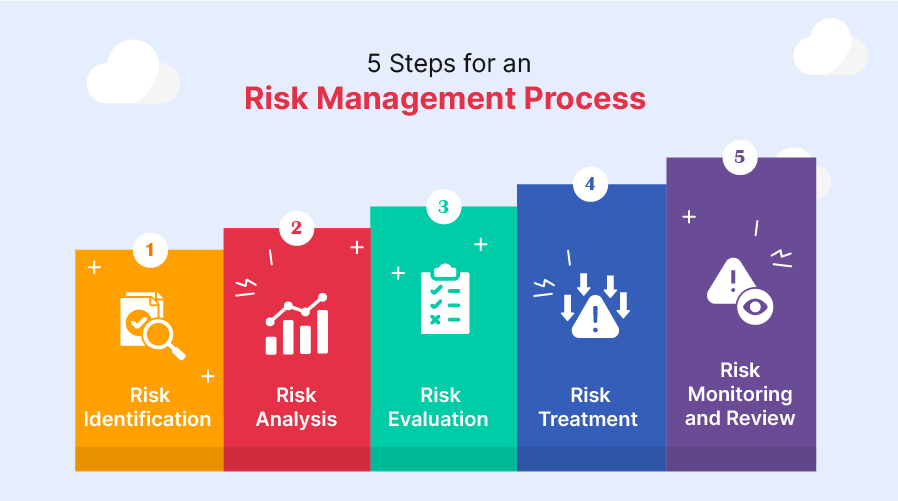An important consideration when implementing a QMS in your organisation is to identify, manage and mitigate risks on a daily basis. Since uncertainties always loom over a business and risk is inevitable, taking a proactive approach to risk and opportunity identification is the only way organisations can ensure quality compliance and stay ahead of the competition.
Implementing a quality management system with well-defined processes to identify risks not only safeguards the organisation against potential threats but also enables it to capitalise on emerging opportunities.
This article will understand what is risk and risk management and explore the steps for an effective risk and opportunity identification process in the organisation.
What is Risk?
Risk is defined as any kind of uncertain event or deviation from the expected result that can affect the organisation's ability to achieve its objectives. While risk is typically considered to have a negative effect, it can also have a positive result for the organisation, identified as an opportunity.
Understanding and accepting the positive implications of a risk will help organisations capture opportunities that are in the favour of the business.
In any organisation, risk management is the systematic process of risk identification assessment, tracking and mitigation. A company's ability to manage its risks effectively is what makes it different from its competitors.
Apart from identifying the risk, the risk management process also involves determining the probability and outcome of a risk. As a part of risk management, it can be difficult to determine how likely an event will occur or even if it will occur at all. By the same token, the consequences when it does occur are also uncertain.
Likelihood is the probability that an event will occur, while the consequence is defined as the outcome or impact of an event. When used together, these two elements determine the magnitude or size of the risk and allow organisations to take the necessary steps to address and manage it.
5 Steps of the Risk Management Process
Here are the 5 steps to form an effective risk and opportunity identification process within an organisation -

1. Risk Identification
The step involves identifying any potential risks in the organisation by employing a risk-based thinking approach across the organisation.
Risk-based thinking is a practical and holistic approach to identifying and handling risk. It requires companies to evaluate risk while implementing QMS and make it a key part of decision-making.
Risk and opportunity identification requires a systematic assessment of internal and external aspects that could impact the organisation's objectives. Internal risks may include operational inefficiencies, financial instability, or human resource constraints, whereas external risks could be a result of economic downturns, technological changes, or geopolitical events.
Similarly, opportunities may arise from market trends, technological advancements, or changes in consumer behavior.
Organisations can employ various techniques for identifying risks, such as brainstorming sessions, SWOT analysis, scenario planning and risk registers.
2. Risk Analysis
Once a risk is discovered, it should actively be recognised as such and defined in terms of its likelihood and the possible outcome.
It involves determining the nature, scope and severity of the risk – understanding how exposed your business is to the risk and what the potential consequences of it are. This risk analysis will allow you to prioritise risk mitigation and map the exact processes and resources needed to address them.
3. Risk Evaluation
Risk evaluation is done by determining the magnitude of the risk, which is a combination of the likelihood of the risk happening and the severity of the risk consequences.
Here, you can prioritise risks based on their significance and the possible costs to organisation. Quantitative techniques such as risk scoring matrices or qualitative assessments can be employed to evaluate risks objectively.
Consider dividing your risks based on their severity as "serious", "moderate", or "minor" impact or based on their likelihood as "high", "medium" or "low" and capture the information in a risk register. Alternatively, a digital risk management system can also help you automate this process and categorise risks when they are identified.
Once the risk magnitude is established, it is time to consider whether the risk is acceptable or not as is. If it is not acceptable, the next step would be to determine the processes and resources needed to mitigate the risk. The risk evaluation is once again captured in the Risk Register.
4. Risk Treatment
Risk treatment, also known as response planning, is the next step in the risk management process, which involves defining the action plan. Assess the risks identified to create and implement a response plan to address the risks.
Depending on the nature of the risk, organisations may choose from risk avoidance, risk reduction, risk transfer, or risk acceptance.
For certain risks that cannot be eliminated entirely, organisations must implement measures to minimise their impact and bring them to acceptable levels. You can proactively treat risks by creating preventive plans, mitigation strategies and contingency plans to avoid or eliminate a risk. Additionally, this step also involves developing strategies to enhance and exploit the opportunities identified to encourage business growth.
5. Risk Monitoring and Review
Risk management is an continuous process that needs regular monitoring to ensure efficiency. Once the full details of your risks and the steps to mitigate them are in the Risk Register, organisations must use this data and establish mechanisms to track the effectiveness of risk treatment strategies. As the business evolves, new risks may arise, while existing risks may change in nature or intensity. Regular reviews ensure that you remain ready to address emerging threats and opportunities.
Moreover, active risk monitoring and review also allow your organisation to detect early warning signs of potential risks and take timely corrective actions
In Conclusion
An effective risk and opportunity identification process is essential to minimise organisational impact and stay ahead of the curve. Although it is never possible to completely eliminate risk, identifying and then managing risks will allow you to avoid unpleasant surprises and unlock growth opportunities.





























